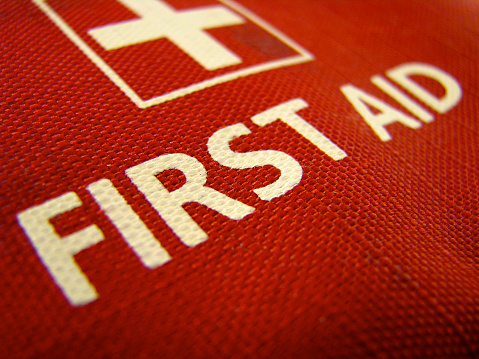Accidents and injuries can happen to anyone, at virtually any time, but older adults are more prone to certain types of them and may need special care. So, to prepare yourself for potentially helping an injured person, you can check the Red Cross website to see when they are offering first aid classes, including CPR certification courses, in your community.
Fortunately, for many situations, you don’t need to have highly specialized knowledge to be of assistance, and this post will share basic first aid techniques that can be helpful to know for helping older adults specifically.
As a baseline strategy, Health.USNews.com encourages people to create first aid kits for their homes and cars, and know where they are kept. They recommend that, in these kits, you keep:
- VeryWellHealth.com lists additional items to put into first aid kits for older adults, including:adhesive bandages
- Bruise relief products
- Burn treatment products
- Gauzes and other covers
- Liquid bandages
- Sunburn relief products
- Muscle relief products
- Topical anesthetics
- Topical antibiotics/antiseptics
- Scissors, in case you need to remove clothing, among multiple other uses in first aid
- Butterfly closures, ideal for seniors who have skin too thin for stitches
- Paper tape, nonstick gauze, roller gauze, transparent film dressing, self-adherent bandages and other products that are kinder to more delicate skin
Before a situation arises where you need to use any of these products, read their instructions and be prepared to properly use them, when necessary. And, as the US News article shares, if you ever get into a situation where you feel as though you need medical help for an injured person, don’t hesitate. Seek that medical help.
Healthline.com lists some common types of situations where first aid is needed, including these quoted from their site:
- Falls
- Cuts and scrapes
- Cardiovascular problems
- Heat- and cold-related illness
Because one third of people aged 65 and up fall every year, we’ll start with basic first aid tips for this situation. If the person who has fallen doesn’t seem badly injured, the article suggests that you help him or her to get into a comfortable position, elevating any injured areas. Then apply an ice pack on “minor bumps and bruises” for about ten minutes. If you see significant bruising, swelling or bleeding, assist them in getting immediate medical care.
Plus, whenever you aren’t sure how seriously someone is hurt, especially if it affects his or her head, neck, back, thighs or hips, ask that person to stay in position and call 911 for help. Keep this person warm until local emergency services arrive, and do what you can to keep him or her calm.
Note: the BC Medical Journal shares a program that helps older adults learn how to prevent falls in the first place. If there is a local program like this, it can be very helpful. Or, talk to your doctor about fall prevention strategies.
As another example from Healthline.com, cuts and scrapes are more common in older adults and, if someone has a chronic health condition—perhaps heart disease or diabetes—he or she will be more prone to infection.
For minor situations, remove dirt and debris from the cut or scrape and then clean it with tap water. If the person is bleeding, place a clean cloth or bandage on top and press firmly. Or, you can bind the area with tape after applying the protective bandage. Then help the person keep the injured area above his or her heart. If blood seeps through the bandage, don’t take it off. Instead, add a second layer.
Seek prompt medical care if the bleeding is heavy, the cut is severe or if signs of infection appear, including redness, swelling, wound drainage or increased pain.










